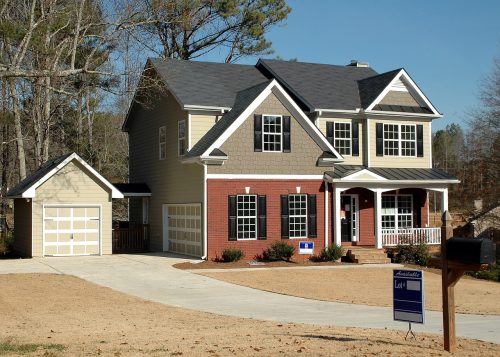Breaking Down Depreciation
Depreciation is a mechanism by which taxpayers can account for the wear and tear of their assets. IRS rules mandate that taxpayers reclaim specific amounts of accelerated depreciation. There are different methods of depreciation including:
- Straight-Line Depreciation: Here, your adjusted cost (or basis) is deducted over the life of the property. Using residential rental property as a typical example, it would be depreciated over a span of 27.5 years. It’s not this simple but essentially you’d take the total cost of the property, divide it by 27.5, and that would give you the annual depreciation amount.
- Accelerated Depreciation: This approach offers more considerable depreciation deductions in the earlier years of an asset’s life and dwindles as the years progress. Take, for instance, an asset with a lifespan of five years. Using the straight-line method, you’d depreciate 20% of its basis annually. However, with accelerated depreciation, you might depreciate up to 40% of its value in the initial year, with this percentage diminishing each subsequent year.
The Concern of Cost Segregation
Cost segregation has been a topic of much discussion and concern among tax professionals, primarily because of depreciation recapture. In essence, cost segregation is a strategic tax tool that allows taxpayers to categorize assets using shorter lives, thereby accelerating depreciation deductions. If the assets life is shorter than 20 years, which happens when cost segregation is used on real property the depreciation is not only accelerated by the shorter life but the IRS regulations allow you to use accelerated depreciation.
The use of accelerated depreciation will trigger some depreciation recapture if the asset is sold before the end of its life. The specter of depreciation recapture looms large, it’s not as daunting as it appears. Taxpayers always have the option to use to the straight-line method of depreciation, ensuring they receive the benefits, albeit spread out over a more extended period. Although taxpayers have the option to use straight line depreciation if given the choice they will generally want to take as much depreciation as possible resulting in the use of accelerated depreciation. If they use accelerated depreciation and sell the property too soon they will have depreciation recapture. That is usually not as bad as it sounds.
Understanding Recapture through an Example
Imagine a property with a basis of $1 million. Following a cost segregation study, suppose you uncover $150,000 worth of five-year property. If you opt for straight-line depreciation on this segment, you’d be entitled to $30,000 yearly in depreciation deductions.
However, things get interesting with bonus and accelerated depreciation. If you started using the property in 2023, you might be eligible for a $120,000 bonus depreciation deduction. The remaining $30,000 would be depreciated over the next five years using the accelerated method.
Now, let’s say circumstances compel you to sell the property after just 2.5 years. Under the bonus and accelerated depreciation methods, you might have claimed deductions amounting to $132,000 during this period. In comparison, the straight-line approach would only yield about $75,000. This difference ($57,000) is what gets recaptured.
But what does this recapture entail? It signifies that the $57,000 would be counted as part of your income, adjusting the basis (increasing the basis by the recapture amount) of your property accordingly. If you were to sell this property without opting for another exchange, you’d face about the same amount of total tax whether you used cost segregation and accelerated depreciation or not. The difference being that you would have benefited from an interest free loan of the tax savings received from using cost segregation.
The Bigger Picture
While the above scenario illustrates a short ownership period, most property owners retain their assets for more extended periods. Moreover, they’d usually engage in an exchange rather than an outright sale. In such instances, although there might still be recapture, the overall financial ramifications balance out over time, providing the same tax benefits.
In Conclusion
Over a longer period of time cost segregation and the accompanying depreciation recapture neither augment nor diminish your deductions or taxable income. Their primary role lies in influencing the timing of these deductions. Think of them as tools, helping you navigate the intricate maze of tax regulations more efficiently. So, the next time you’re confronted by the “dark” unknown of tax rules, remember: a little light goes a long way.
FAQ
Q: What is depreciation recapture?
A: Depreciation recapture focuses on the reclaiming of certain amounts of accelerated depreciation. In the context of a 1031 exchange, cost segregation will always provide depreciation benefits quicker even if some of the benefits are recaptured.
Q: How do straight-line and accelerated depreciation differ?
A: Straight-line depreciation is a method where an asset’s adjusted cost (or basis) is spread evenly over its lifespan. For example, a residential rental property would typically be depreciated over 27.5 years. On the other hand, accelerated depreciation front-loads deductions in the earlier years of an asset’s life, with the deduction amount gradually decreasing in the subsequent years.
Q: What’s the buzz about cost segregation?
A: Cost segregation is a tax strategy that allows taxpayers to classify assets to benefit from accelerated depreciation deductions. It’s gained attention mainly because of its relation to depreciation recapture, a concept that some find daunting. Depreciation recapture doesn’t mean you will pay more tax it just changes the timing of when you pay the tax.
Q: How does the recapture process work in practice?
A: Let’s use an example: If you have a property valued at $1 million and, after a cost segregation study, find $150,000 worth of five-year property, your depreciation choices will influence your deductions. If you choose accelerated depreciation and sell the property after 2.5 years, you may end up with more deductions than the straight-line method. The difference in deductions, such as $57,000 in our example, becomes “recaptured” and is considered part of your income, influencing the tax you owe for the current year. If you exchange and use cost segregation on the replacement property your net tax savings should work out to the same or more, it’s just spread over a longer period
Q: Is depreciation recapture something to be worried about?
A: While the idea of depreciation recapture might sound intimidating, its primary role is to influence when deductions are made. It doesn’t increase or decrease your overall deductions or taxable income. You should be aware of the amount of depreciation recapture when you sell and be prepared for some extra tax that you save in the prior years. Since recapture will not have a net tax cost any concern should only be in the year of sale.














